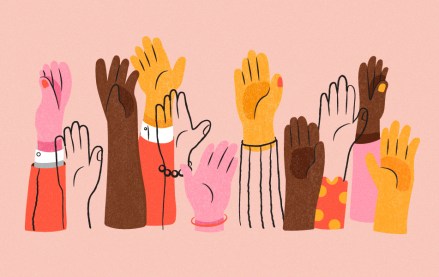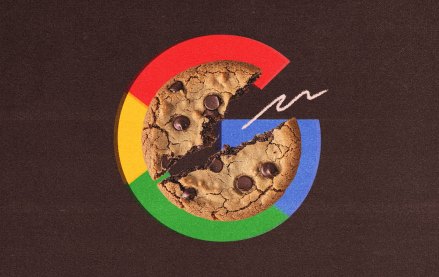The new year means looking ahead to what is sure to be another turbulent year in media. 2017 ended on a sober note of missed earnings, fire sales, platform paranoia and lowered expectations. An even more worrying note: All this has taken place in a roaring economy due for a downturn. Assuming we avoid calamity or economic meltdown, here are some big questions that will play out in the months ahead.
Will the duopoly stranglehold on media weaken?
Tech has replaced Wall Street as the new villain, blamed for influencing elections and feeding brain-altering digital addictions that are making the mere act of deep thought rare. The bloom came off the rose in 2017 for Silicon Valley giants like Google and, in particular, Facebook. Marketers are publicly taking platforms to task for laissez-faire approaches to brand safety. Governments are increasingly calling for regulation of platforms as some form of media companies. Publishers are starting to sour on distributed media strategies pushed by platforms. 2018 will likely be more of the same, only little of the fury on the surface will get beneath it. Harsh regulations are unlikely to take hold. New ones like the General Data Protection Regulation will likely benefit Google and Facebook in the near term. Publishers will wisen up with their use of platforms but not abandon them en masse. And advertisers will continue to do more talking than taking action. — Brian Morrissey
Can Snapchat make it independently?
Snapchat is firmly in the trough of disappointment in the Gartner Hype Cycle. The messaging app got publishers excited about getting a crack at Snapchat’s young audience. But CNN’s move to shut down its Snapchat Discover channel is a bad omen. The 10-person Snapchat team is a big investment, and the ad dollars aren’t yet there to justify it. Snapchat will do what it can to make sure others don’t follow CNN’s lead, but publishers will move to rationalize their spending on platforms that provide immediate returns. Snapchat is due to lose out. Similarly, Diageo’s move to pull ad dollars because its sponsored lens reached underage people underlines how Snapchat is behind rival platforms in user data. 2018 is likely to be a rough year for the ghost. — Brian Morrissey
Will subscriptions hit a wall?
The pivot to consumer revenue is easy to get behind. (We clearly believe in it as an important part of a media strategy at Digiday.) But behind the hopeful signs of big numbers put up by The New York Times and The Washington Post, along with encouraging models like The Information, hard choices await. Publishers will need to convert trial subscribers to full-paying subscriptions, while managing churn. And the sheer proliferation of subscription models — CNN and The Atlantic are launching them — will work against publishers. People will be overwhelmed with paywalls, meters and other impediments. Many publishers are likely to find their content isn’t differentiated enough to warrant a direct payment. — Brian Morrissey
When will video makers give up on — or at least pull back from — Facebook?
First, Facebook was willing to pay video makers to produce live videos every month. Then, Facebook was willing to pay video makers to produce live and news feed videos every month. Then, Facebook decided it did not want to pay for this type of content, but instead would fund original shows made by top digital publishers. Then, Facebook decided it wanted longer shows and, increasingly, ownership over the shows, which would mean video makers could only rely on a production margin to make any money from Facebook. In this entire time, no ad-revenue sharing product by Facebook has worked. Now, Facebook will attempt pre-rolls.
One top news publisher, when Facebook said it was cutting off funding for Live and news feed videos, said it plans to scale back how much it publishes to the platform in 2018. At some point, more publishers will have to arrive at the tough conclusion that Facebook’s reach is not enough — and that might mean pulling back and investing on other platforms or their owned-and-operated destinations. Facebook will be in the video business, but that doesn’t mean it needs publishers to get there. — Sahil Patel
Will Amazon crack the duopoly?
From publishers to marketers, a lot of people are pinning their hopes on Amazon breaking the duopoly’s stranglehold on digital advertising, and it’s easy to see why. Amazon is certainly making bold moves in that direction. Its new office in New York City, the heart of the ad industry, is slated to be staffed with 2,000 people, mostly in advertising. It’s knocking on agencies’ doors and pitching itself to non-endemic advertisers. It’s got a lot to pitch, from search to display to video ad products. One publisher I recently talked to confided that a major advertiser was planning to shift the company’s entire budget from Google and Facebook to Amazon, so great was Amazon’s customer purchase data. But Amazon’s size is as much a benefit as a curse. Its sheer size and number of offerings make it hard for agencies to develop a relationship with Amazon. Its ad infrastructure lags that of Google and Facebook. So 2018 is likely to be a year of incremental growth for Amazon, as there are still a lot of bugs to work out. — Lucia Moses
More in Media

Media Briefing: Efforts to diversify workforces stall for some publishers
A third of the nine publishers that have released workforce demographic reports in the past year haven’t moved the needle on the overall diversity of their companies, according to the annual reports that are tracked by Digiday.

Creators are left wanting more from Spotify’s push to video
The streaming service will have to step up certain features in order to shift people toward video podcasts on its app.

Digiday+ Research: Publishers expected Google to keep cookies, but they’re moving on anyway
Publishers saw this change of heart coming. But it’s not changing their own plans to move away from tracking consumers using third-party cookies.





